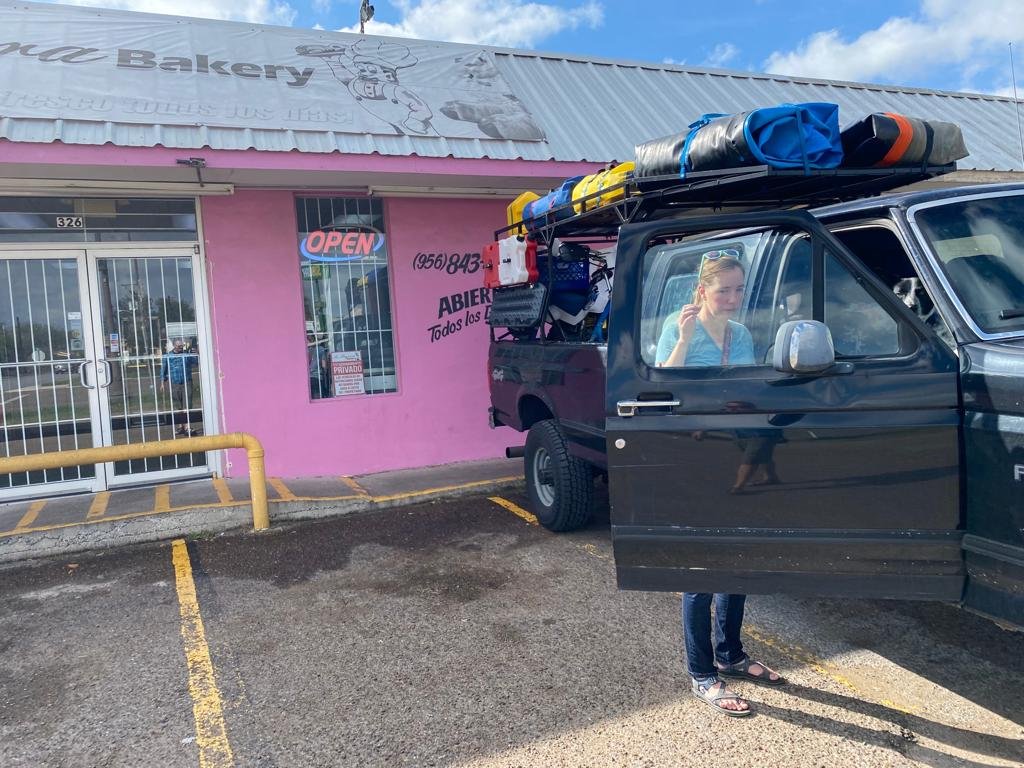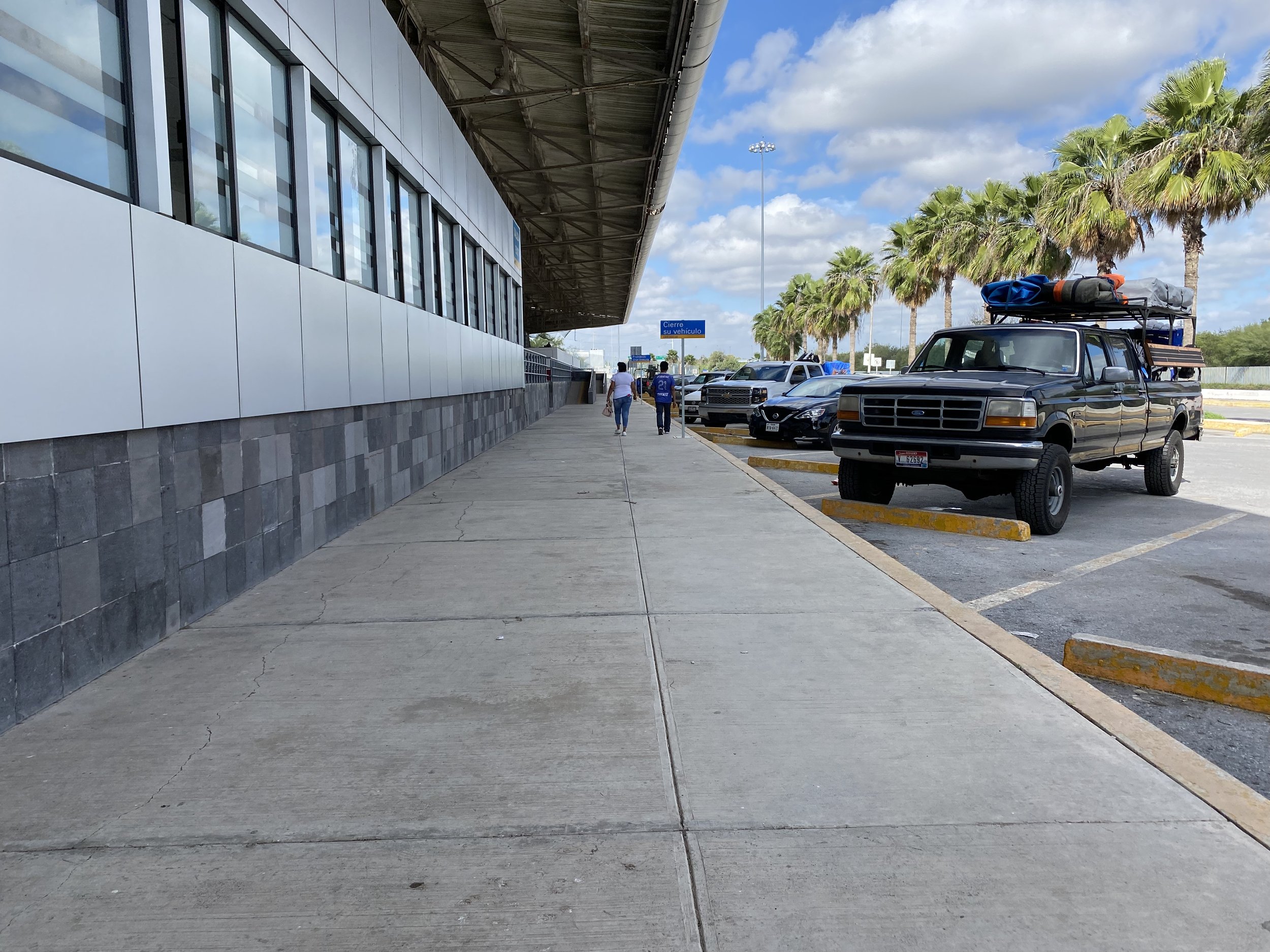Mexico 2.0 Part 3: Merry Christmas in La Pesca! (12.25.2021)
/Gifts to Ourselves
Waking up in our tent on Christmas morning was glorious. We had already decided to take the day off, it was Christmas after all - no driving, no worrying, no errands. We had a campground to explore, enough snacks in the pantry and food in the fridge to last for a few days, and Chelsea’s camera wasn’t going to run out of film any time soon.
We had driven in the night before at dusk - there was still a golden glow coming from the West, and we were given a few minutes to see the majority of the property before we were bathed in darkness, but we really hadn’t gotten a feel for the place, so the first order of business after some instant coffee was to explore. The property was called “Tropicana Resort” and we found it using iOverlander, but it is also listed as “Topicana Bungalows” on Google. The Tropicana Resort was one of thee reviews for the La Pesca area on iOverlander, and it specifically mentioned camping and seems to have become an overlanding favorite as it offers simple amenities at an inexpensive price, like bathrooms, limited shore power opportunities, basic WiFi near the owner’s house, and very safe parking. The greater community of La Pesca looks to have many hotel opportunities, and I am sure most of the properties would welcome campers, especially self contained overland rigs. We were warned, however, that spring break season in the area can bring tens of thousands of tourists, so the sleepy community we found on Christmas day may not be indicative of its status year-round. You’ve been warned.
The resort was “gaurded” by two homes that looked lived in full time - one was the owners and the other I assume belonged to family member or a laborer, as there was evidence of recent and ongoing construction. The owners house contained the bathrooms, maybe a few toilet stalls and showers stalls, out of which there was an obvious favored one of each, and the WiFi, so communication had to be done in the shade of a palm tree maybe 20 meters away, as the signal didn’t reach the camp sites. Extending down the property from the owners house were two grassy fields, one on each side of the resorts drive way, maybe 100 meters long, with plenty of room to fit a dozen campsites.
At the end of the grassy fields were five beautiful, thatched roofed casitas, painted in breathtaking off-shades of primary colors, giving the property a very tropical kindergarten vibe. Two large communal palapas and a shallow swimming pool bordered the shoreline of the Rio Soto La Marina, an estuary that reaches all the way to the town Soto Marina on Mex180, which was our turn off the highway and towards the coast.
Exploring the property and letting Gracie get used to her first of many encounters with free-roaming Mexican dogs.
Casitas to the right…new pool under construction to the left.
We’ve officially entered the land of coconuts!
Stretching Our Legs
Even though we had told ourselves we were going to take the day off and do nothing, I eventually got antsy and couldn’t keep myself from unloading our two motorcycles for a short ride to the beach. The entire build of the truck was based on hauling our TW200s, and we had compromised on a lot to have motorcycle freedom, so I felt we needed get our money’s worth out of the hassle.
We locked Gracie in the truck, strapped on our retro helmets and carefully buzzed down to the beach, only a few kilometers away. It was gorgeously empty - no cars on the road and only a few in the parking areas. There was a healthy breeze, and the Gulf was gently crashing on the shore, and it all felt alien and beautiful and perfect. We had no desire to stay, only the desire to experience and enjoy and move on, the essence of travel.
We rode the sand tracks back as far as we could, as they paralleled the road and offered access to palapas and private family campsites set just far enough off the sand to be considered privada and not publica. The sand dual tracks were flowy and firm and fun and we are terrible motorcyclists so it felt like a real adventure to be driving 10MPH next to the Gulf on something that wasn’t asphalt. Eventually we were flagged down by a passing motorist in a nice sedan, maybe a Lexus or something like that. Out stepped a man in his mid-70s who wanted to know what were we doing, what we were riding, and what we thought of his stories of his old Yamaha road bike that he used to tour around on. It made me a little disappointed that we weren’t doing the entire trip on the TW-200s, as I don’t think he would have waved us down if we were driving the truck.
We didn’t stay long, as we knew we had a needy little cattle dog waiting in cab of the truck, so we turned tail and rode to the campground. Back at the site Chels released the hound and we gave her a quick tour on the back of my bike - Gracie loves being with us on any vehicle, in any craft, and doesn’t want to miss a single adventure.
Camp Life
The best part of overland travel is having genuine, cross-cultural interactions with local residents in foreign communities. The second best part of overland travel is meeting other travelers. Thankfully, there were a few other travelers at La Pesca, and we had a fantastic time spending the Holiday with them.
First we met a Belgian family of four (plus dog) traveling from Canada to Panama in their late 80’s full size class A motor home. They are touring and posting under the name “Fata Tropicana” and they are worth a follow on Instagram, especially for anyone with little kids that was to do the long distance, long(ish) term traveling thing. I was mostly a fan of their stories of crossing the Mexican border, as it took them three days ( I thought my 3 hour “ordeal” was bad!) and included some light forgery using Photoshop.
In addition we met Luis and his girlfriend, traveling in retirement from Quebec through the United States and in to Mexico in their crossover SUV towing a hard-sided pop-up trailer. He had been planning the trip for years, including a once-in-a-lifetime stop in his dream destination of New Orleans, Louisiana. His family had begged him not to go, he said, warning him of the dangers of traveling in Mexico, promising he would lose his life south of the border. Instead, he had so far spent a few weeks scuba diving in the Gulf and eating seafood tacos. I suppose danger comes in all forms?
It was a great two nights, with one full Christmas Day of doing not much and loving it. We had a little camp fire with our traveller friends, met the property’s parrot, hung out with local Mexican-Americans visiting family, and slept in the tent for the first two nights on the journey. It was exactly the present we had been wishing for.
An informal gathering of the travelers in the ‘wifi zone’ of the campground.
Our Christmas selfie!
Our camp spot turned adventure-staging area with the bikes out.
Gracie has fully adopted the truck as her safe space, opting to lounge in the back seat or in the truck bed when she’s tired.
Finally using the roof top tent - AKA ‘Sky Cabin’!
































